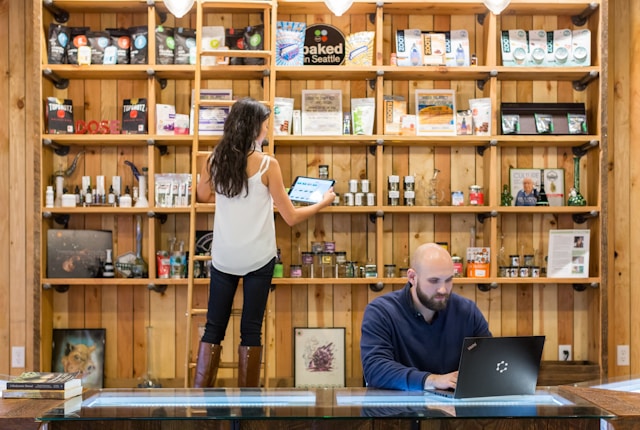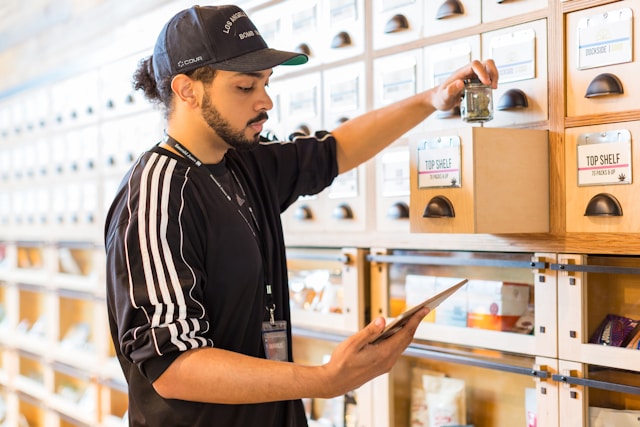As a preface to this article, please note a new Cannabis nomenclature being driven by Golden Eagle Partners (GEP). To simplify and improve consistency, GEP believes the entire sector should be covered by the name of the species, Cannabis (that is why we will capitalize Cannabis). For simplicity, the rest of the sector will be defined by two simple categories: THC+ (Cannabis) and THC- (hemp). All kinds of different products then fall within those two categories.
Dispensaries or retailers have always been a critical part of the supply chain for companies producing and selling THC+ products. In the early days, the emphasis was on cultivation with significant investment in technology, size, and security. Over the last five years, due to several factors, the concentration has gradually changed to a focus on the retail side of the business.
Early Days: The Search for Fintech and Other Pursuits
Since the start of the legal THC+ sector in earnest in 2014 (California legalized medical THC+ in 1996) when Colorado and Washington started selling THC+ products in January of that year, there has been a constant drumbeat for transactional solutions for the sector. In the early days, the most prevalent booths at MJBiz were all about fintech and potential solutions to the transactional issues of Cannabis. Although a Cannabis transaction is still not similar to a “normal” transaction in other industries, many workarounds have helped.
The other significant change in North American Cannabis retail from the early days is the continuing drive to become more cost-effective. Initially, many companies spent too much money to replicate an Apple/Tesla unique retail experience or set out footprints that were too large.
In the last eight-plus years, operators have continued to evolve to be more pragmatic and build retail operations that are functional over form. Retail is also where the IRS 280E tax code hits operators the hardest. It doesn’t allow for the deduction of expenses for a typical business, resulting in lower margins. This tax code has been and continues to be an impediment to retail operations for THC+ operators.
New Technology: What Might be Around the Corner?
With the potential to finally pass the SAFE Act or its most recent incarnation, SAFER, the final financial solution to ease all transactions for THC+ products may be on the horizon. Whether financial reform for THC+ companies comes to pass, some other trends might have significant impacts on the industry.

With the advent of hemp-based cannabinoids, whole new markets are opening up that may put pressure on the dispensary model. Currently, dispensaries are adding more products that include more than just delta-9 tetrahydrocannabinol (D-9) and cannabidiol (CBD) — but now include cannabichromene (CBC), cannabigerol (CBG), and cannabinol (CBN) to name a few.
Also, the next wave of cannabinoids continues to take hold in the U.S. and other geographies around the world, with new products containing molecules like hexahydro-cannabinol (HHC) and delta-8 hydrocannabinol (D-8). The technology and chemistry driving these cannabinoids that are being sold in non-regulated shops could have significant ramifications for the future of Cannabis retail.
Another consideration of the future of THC+ dispensaries is how adult-use and medical products evolve. Currently, adult-use products are driving a large majority of the sales in the U.S. With more clinical trials coming online and the continued interest of older consumers, the percentage share of Cannabis products that are medical-based should continue to expand over time. The effects of a rotation to more medically relevant products could have some interesting effects on THC+ retail.
Future Technologies: Will Dispensaries be Necessary?
In the beginning, it was all about dispensaries. We are now seeing some dynamics that may change the THC+ landscape forever. Recently, there’s been a move in Cannabis retail to an online model in some geographies. In the last three months, a law went into effect in Colorado allowing for the purchasing of THC+ products online.
The products must be picked up at a dispensary, but it is one of the first examples of Cannabis moving online. As Americans know, the Amazons of the world have had dramatic impacts on retail over the last 20 years and Cannabis will be no different in the future. Some new technologies in preliminary development could be equally disruptive.

There is a company in Germany developing a technology that would convert a legal molecule into D-9 only seconds before consumption. Adoption of this technology could allow for shipment of products across borders and not require regulatory requirements on retail.
International: Does the Dispensary Model Translate?
Germany legalized medical cannabis in 2017 and has now approved adult-use Cannabis. With medical driving for now, Apothekes, or what are known as pharmacies in Germany, are driving the retail of Cannabis. New efforts to legalize adult use are mentioning social clubs as one of the main pillars of adult use. The chance the dispensary model will be adopted is slim.
In the last 12 months, Switzerland has legalized the sale of adult-use THC+ products. The Weed Care program is rolling out on a city-by-city basis and is closely monitored by the Federal Office of Public Health and the International Narcotics Control Board. The goal of the program is to monitor the effects of Cannabis on a selected, roll-out population over the next two years. The initial stages of the program involve selling six products (two hashish, four flower) in nine pharmacies around Basel.
Luc Richner, CEO of Cannavigia, the company behind the software that monitors the Weed Care program says the main drivers for Swiss retail will continue to be available in pharmacies, social clubs, dispensaries, and kiosks. Dispensaries are only a small part of retail in Switzerland.
This article first appeared in Volume 5 Issue 3 of Cannabis & Tech Today. Read the full issue here.






